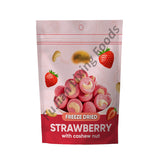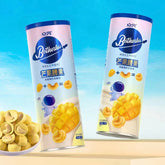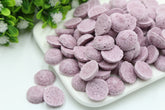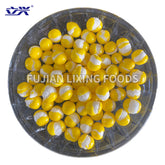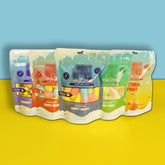Freeze-Dried Fruits: A Perfect Blend of Technology and Nature
In recent years, freeze-dried fruits have emerged as a popular choice among health-conscious consumers and food manufacturers alike. From astronauts’ space meals to everyday snacks, this innovative preservation method bridges the gap between convenience and nutrition. Let’s dive into why freeze-drying is revolutionizing how we enjoy fruits.
1. What is Freeze-Drying?
Freeze-drying, or vacuum freeze-drying, is a process that removes moisture from fresh fruits under low-temperature and vacuum conditions. The fruits are first frozen at ultra-low temperatures (typically below -40°C), then placed in a vacuum chamber where ice sublimates directly from solid to gas, bypassing the liquid phase. This method preserves the fruit’s cellular structure, color, and flavor while retaining up to 95% of its original nutrients.
Key Advantages:
-
Nutrient Retention: Unlike heat-based drying (e.g., sun-drying or hot air drying), freeze-drying minimizes the loss of heat-sensitive vitamins like vitamin C and antioxidants.
-
Crispy Texture: The porous structure created by sublimation gives freeze-dried fruits a light, crunchy texture that’s easy to chew.
-
Long Shelf Life: With moisture content reduced to 1-3%, freeze-dried fruits can be stored for years without preservatives.
2. Freeze-Dried vs. Fresh: Nutritional Showdown
While fresh fruits are unbeatable in their natural state, freeze-dried varieties offer a competitive alternative. Studies on black mulberries showed that freeze-dried samples retained 90% of their anthocyanins (a potent antioxidant), compared to only 20% in heat-dried counterparts8. However, water-soluble nutrients like vitamin C may still experience minor losses (5-10%) during processing.
The Sugar Factor:
Dehydration naturally concentrates sugars, making freeze-dried fruits sweeter per gram. For example, 20g of freeze-dried mango equals the sugar content of 200g fresh mango. While this enhances flavor, portion control is essential to avoid excessive calorie intake.
3. Applications: Beyond Snacking
Freeze-dried fruits are versatile in both consumer and industrial markets:
-
Food Industry: Used in cereals, instant noodles, and seasoning blends for enhanced flavor and texture.
-
Health Products: Powdered forms (e.g., mango or papaya powder) serve as natural additives in supplements and functional foods.
-
Space and Emergency Food: Their lightweight and long shelf life make them ideal for astronauts and disaster relief.
Case Study: Fujian Lixing Foods Co., Ltd. utilizes freeze-drying to produce vegetable powders (e.g., carrot and spinach) for global food manufacturers, ensuring year-round supply stability.
4. Challenges and Innovations
Despite its benefits, freeze-drying faces hurdles:
-
High Energy Costs: The process consumes 4-8 times more energy than conventional drying methods.
-
Technical Optimization: Researchers are developing AI-driven models (e.g., RBF neural networks) to predict drying parameters and reduce energy waste. For instance, studies on pitaya freeze-drying achieved higher precision in controlling temperature and sublimation rates.
Future Trends:
-
Hybrid Technologies: Combining freeze-drying with infrared or microwave drying to shorten processing time.
-
Sustainable Practices: Utilizing natural cold resources for pre-freezing, as seen in ZL1200 storage systems that cut electricity use by 90%.

